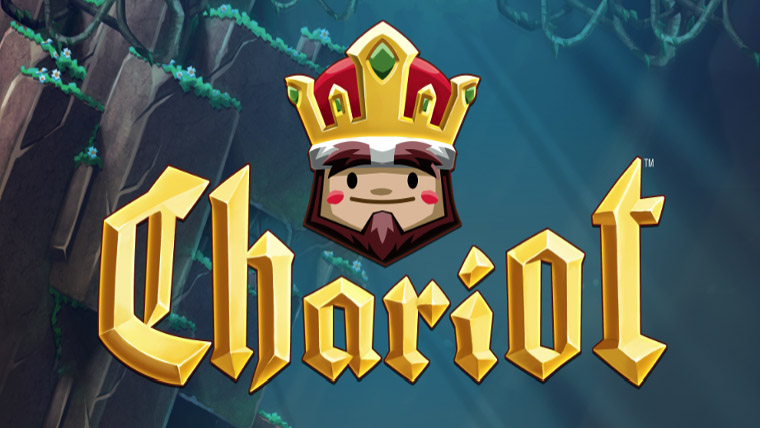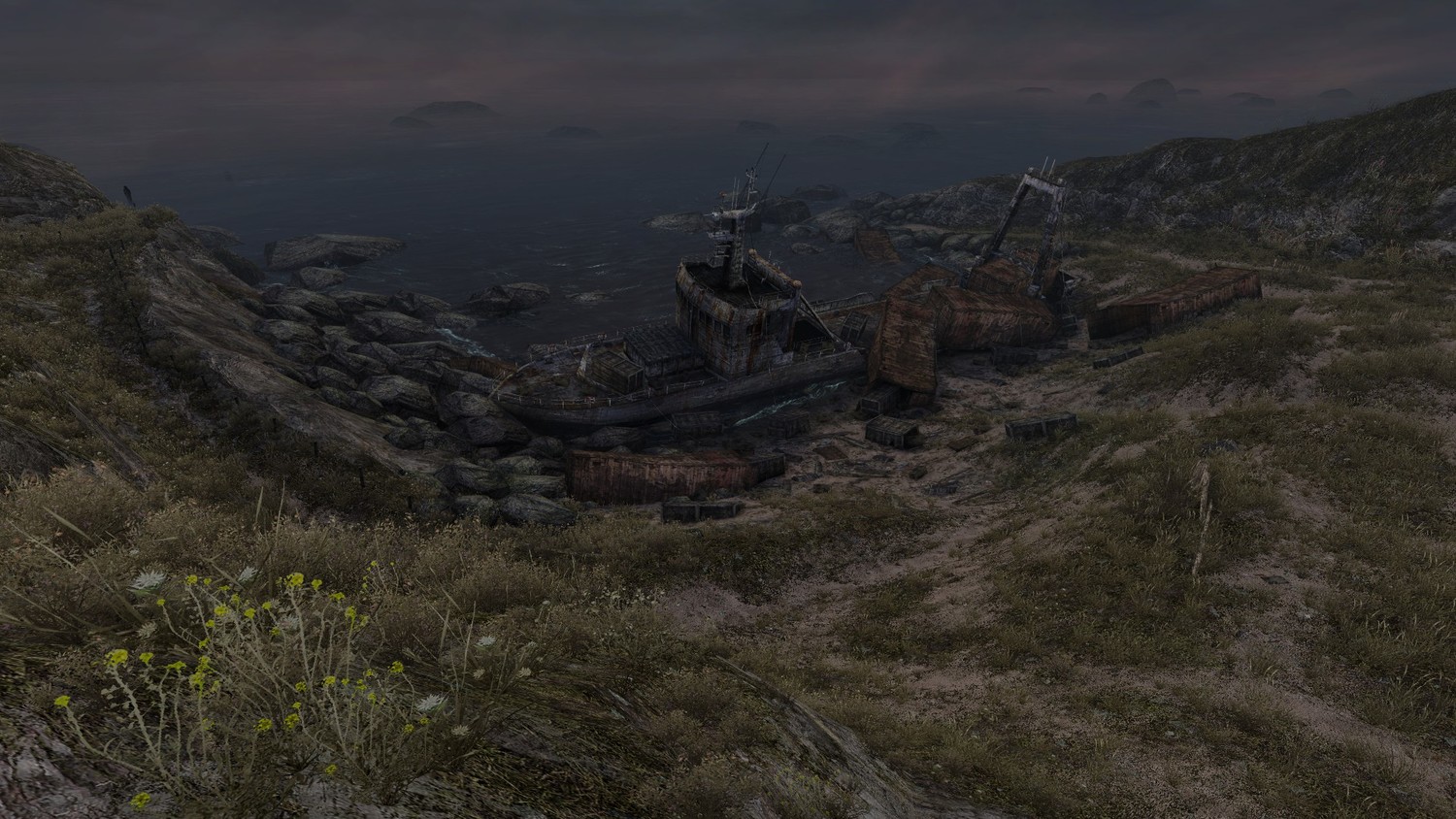
Review: Chariot
Posted by Eric G on November 26th, 2014 | 0 Comments | Tags: Chariot , Frima Games
When I saw gameplay and read descriptions of Chariot, I wasn’t quite sure what to expect. The last physics-focused platformer I remember playing on a Sony console is probably TerRover, which left a bad taste in my mouth to say the least. I finally got around to securing a co-op partner and booting up Chariot to find quite the opposite experience. Its overall presentation hits all of the right notes. The game plays great with two players but provides an adequate challenge to the skilled soloist. Besides for a couple of torn edges, Chariot is a wonderful present for players seeking a puzzle platforming adventure.
The objective of Chariot is to pull the king’s coffin to a sepulcher worthy of his majesty. Play as either the king’s daughter or her fiancé as you push, pull, swing, and ride the chariot through different areas. Collectibles include loot, blueprints, and hidden skulls. The control scheme is a bit onerous at first, but quickly becomes second nature. Since this is a platformer after all, it should come as no surprise that the X button jumps. Triangle activates your gadget, which I’ll discuss in a bit. Square attacks looters, and that’s about it for the face buttons. Most of Chariot is played like a two-handed piano piece across the shoulder buttons. As long as you are in range of one of the two contact points on the chariot, R2 will attach a rope to it. While attached, holding L1 will pull the cart toward you. L2 lends it some slack. As you become more familiar with the chariot’s weight and the effects of your push and pull forces on it, you’ll find yourself going to town with the Rs and Ls. Lastly, but certainly not leastly, holding down on the analogue stick anchors your character, which is immensely important, especially in the ice stages.
Chariot is spread over five different worlds, each containing a sepulcher at the end of its five stages. You’ll notice that the king suffers from “Princess in another castle” syndrome as you trek from one sepulcher to the next. Each stage contains three hidden skulls and at least one blueprint. Once completed, you can speedrun through a level and marvel at the fact that what just took you 43:00 can be completed in 2:41. There are typically multiple exits and entrances (starting points) in each stage. In viewing the Royal Catacombs Map after each level, you’ll begin unearthing a web of extra entrances and a slew of alternate exits. The first world is a bright forest filled with green grasses and yellow sun rays. The game’s overall aesthetic is fantastic, especially as presented in this world. The graphics are warm and smooth and the music plays like something straight out of a Renaissance Faire, lilting in the background as you toil at the king’s commands. The playable characters never actually talk, but the king is rather vocal, to say the least. Luckily, the voice acting is strong and the writing is effective enough to maintain that fantastical feeling. The only world that consistently rubs me the wrong way is the second one. The dark, claustrophobic, cavernous stages are reminiscent of Spelunker Black, revealing just enough light for you to hesitatingly hop to the next platform. Even the ice world, a potential game-killer for a physics-based platformer, becomes traversable with some anchoring and pulling practice. Each world after the first requires a chariot upgrade in order to progress. You’ll need the lantern in order to gain entry to the second world, for example, and winter wheels to roll on snow. Upgrades are received at the game’s shop.

After finding the first blueprint early on in the game, you’ll unlock the Peg gadget, which attaches the chariot to a tether tied to a planted peg. In progressing through the game, you’ll undoubtedly stumble over other blueprints. The only necessary collectible prints are the ones that upgrade the chariot. Extraneous blueprints unlock and upgrade a variety of gadgets that aid in your quest, or at the very least break up the habit of pushing and pulling. After discovering the Attractor and the Repulsor, I found the shop to be a bit hollow. Unless you purposefully avoid loot, you’ll have more than enough cash to buy the gadgets and their upgrades. Also, blueprints are gadget specific, so the scroll you found in 2-3 will only upgrade the Canary. I feel like a better system would be to find general blueprints and let the player decide what to upgrade. The way it stands, the player is forced to upgrade gadgets that may not get much use. The best aspect of the shop is its skeletal shopkeep. His humorous, sometimes corny quips often stretched a smile across my face. I’d grant the skeleton Chariot‘s MVP, but I haven’t yet collected all of the skulls to figure out if he’s a playable character (P.S. Please make him a playable character).
The game was designed to dish out a joyous couch co-op experience. I played through most of it with a partner, and by in large Frima have succeeded in showcasing what local co-op is all about: communication, teamwork, wild saves, and persistent effort toward grabbing a particularly difficult big blue gem. However, at times the game can be frustrating with two players. If the players aren’t equally skilled, it becomes quickly apparent who’s progressing and who’s hanging from a tether. There were multiple occasions where one player (myself included in this, however skilled I may claim to be) screwed up a portion by missing a jump or not anchoring on time. The designed backtracking in Chariot – its myriad paths uncovered by unlocking new entrances/exits – is great, extending replay and promoting exploration. Having to repeatedly climb up the same series of icy platforms, though, can be a royal pain, especially when only one person is at fault. The game is beatable and surprisingly enjoyable if you can’t find a buddy to play with. Many of the two-player puzzles can be completed by craftily using gadgets. The only problem with playing single-player is that the difficulty curve is rather steep. Once surmounted, you’ll feel like a boss, tossing and swinging and pulling with ease. After completing Chariot, I’m still replaying earlier levels and discovering hidden gems here and there. I’ve actually committed to earning the platinum in this one, which is saying a lot. Give it a go if you’ve got a partner around to share in the fun! You can also use SharePlay to pull an e-friend from afar to your figurative couch. Either way, I highly recommend Chariot to kids, adults, and anyone in between.
A copy of this game was provided by the publisher for review purposes. For more info on our review policy click here.
General Info
- Developer: Frima Studios
- Publisher: Frima Studios
- Platforms: PS4
- Release Date: September 2014
- Price: $14.99
- Genre: Co-op, Physics Platforming, Puzzle Platformer
- Players: 1-2 (Local Coop)
- Ratings: Everyone, PEGI 3
Score:
What I Like:
- Fantastic overall presentation
- Fair degree of difficulty
- Collectibles and exploration motivation
- The skeleton character
What I Dislike:
- World 2
- Sometimes frustrating co-op; lonely single-player
- Hollow shop system













































